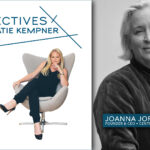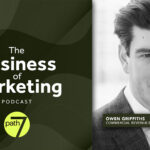Branding for wellness and weight loss amidst the GLP-1 mainstream wave.
By Sophie Maxwell, Partner, Futures & Insight, Pearlfisher
Let’s state the obvious: Wegovy, Ozempic, and all of their GLP-1 counterparts are—in fact—weight loss drugs. But you know what? Increasingly, they’re straddling the line of wellness products, with the likes of Lemme, Hims & Hers, and Nestlé driving this shift into the mainstream thanks to desirable lifestyle-oriented propositions. This gray zone begs the question: How should brand experts and marketers steer the future of the sector, not to mention guide brands and consumers on their journey amidst this veritable GLP-1 boom?
According to a poll by the Kaiser Family Foundation, about 12% of US adults have taken a glucagon-like peptide 1 (GLP-1) medication as of May 2024—and those numbers are only expected to grow.
From Clinical to Consumer
Semaglutide’s FDA approval, coupled with fairly impressive clinical results and a plethora of case studies thanks to celebrity use, has created a rapid rise in its notoriety, popularity, and accessibility. Initially used for the clinical management of diabetes, stories of its potential multiple health benefits—most notably weight management through the slowing of digestion and curbing of hunger pangs—have paved the way for its global uptake. Proving to be a more effective solution than previous anti-obesity medications, it is now being touted as a potentially limitless commercial opportunity for big pharma.
Given that consumers no longer need a formal script from their doctors (you can snag the shot via any number of wellness shops, aesthetic institutions, and the like based on BMI), it’s fair to say that consumers are using it as a way to control appetite and shed weight, yes, but also as a way to regain mobility and confidence. Again, it’s a gray zone.
Note that the drug’s high cost—just under a thousand dollars per month—is currently the main barrier to long-term adoption by consumers, and this may also contribute to its more premium appeal and desirability as a consumer-branded proposition.
Branding the “Ozempiconomy”
Consider also that in 2024, consumers’ seemingly unstoppable investment in all aspects of health and wellness—currently around $5.6 trillion—continued to accelerate. The pursuit of optimizing overall health and the desire for preventive care to combat the stresses of modern life mean that beauty, sleep, nutrition, fitness, and mindfulness have all been targeted by brands to offer more specific and focused treatments designed to continually support and even supercharge their audience. Despite an increasingly progressive world of scientific diagnostics and technological developments in healthcare—which have helped to double our lifespans over the last 100 years—significant public health challenges remain, and worldwide obesity has nearly tripled in the last fifty years.
So, could the “Ozempiconomy” now be both the frontrunner for brand opportunities in helping us achieve our physical and mental health ideals—and one of the biggest ever opportunities in healthcare? The impact on Norway’s economy and the fact that Novo Nordisk surpassed LVMH as the highest market cap in Europe last year seems to suggest so.
As consumer businesses and brands increasingly venture into this space, the need to clearly define how consumers should engage with it—both physically and emotionally—to create safe and effective journeys toward better health also heightens. This requires creating holistic solutions that go beyond medication to offer comprehensive lifestyle strategies. Nutrition, exercise, and mental well-being need to be integral components, supported by forums where users can connect, share experiences, and motivate each other.
Designing for a New Era of Health
From a brand identity and design perspective, bringing together the right level of expert care and clearly signaling clinical-grade personal care—while creating emotive and desirable visual and verbal language—will become essential. Personal care brands must connect functional benefits with emotional drivers, normalizing medical healthcare and interventions in everyday health discussions while supporting consumers on their individual semaglutide journeys.
Furthermore, the opportunity to redefine the language of clinical weight-loss has never been clearer. Brands must evolve their communication strategies to incorporate holistic healthcare messaging that is both consumer-centric and visually appealing. This shift reflects the increasingly progressive use of modern science to achieve a more holistic view of health, where nutrition, medication, and lifestyle changes are interconnected and ultimately more accessible.
Finally, this moment signals a need for the industry to set positive benchmarks and establish standards that champion the shift in perspective on weight loss—defining its future as healthy, safe, and empowering. Brands that adapt to these changing expectations will not only thrive but also lead the next wave of supply—and meet the increasing demand—for this seminal sector.






